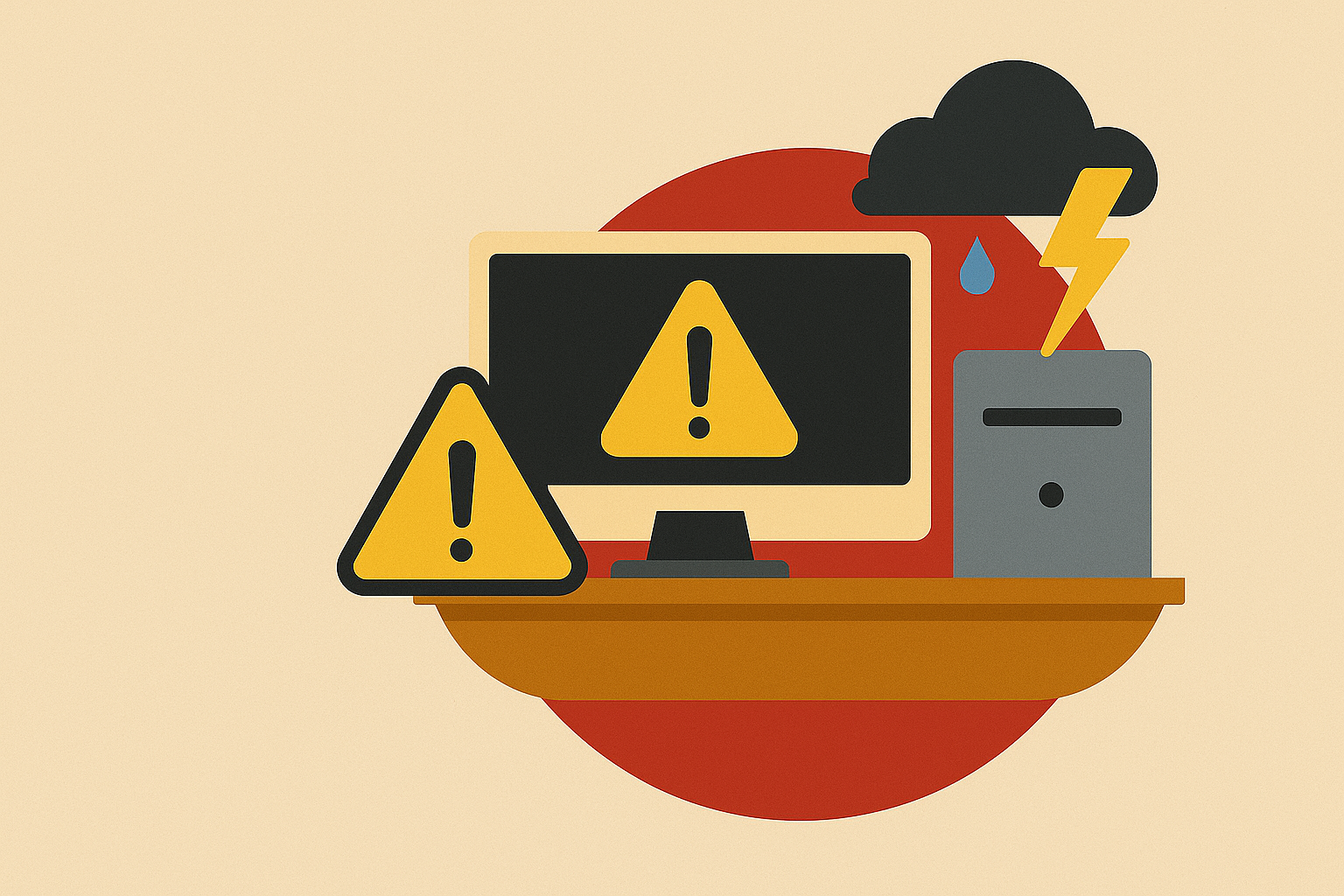Disaster Recovery Planning
Be Ready for Anything—Before It’s Too Late
What Is Disaster Recovery Planning?
Be Ready for Anything—Before It’s Too Late

Imagine a power outage, cyberattack, or a flood shuts down your office. Suddenly, your systems go dark. No emails. No customer records. No orders. No access to your systems. No way to process payments. No way to talk to your team.
That's what happens when you don't have a Disaster Recovery Plan.
Disaster Recovery Planning is more than just backing up a few files. It's a comprehensive, step-by-step strategy that helps your business recover quickly after any disruption—whether it's a technical failure, natural disaster, or cyber incident.
It’s more than backup. It’s your business continuity roadmap.
It’s not about if something goes wrong—it’s about when.
Why Disaster Recovery Planning Matters
because recovery shouldn’t depend on luck
Disasters don’t always arrive as headlines—they often start as quiet disruptions: a server failure, a power outage, a rogue email click. Without a recovery plan, these can escalate into lost revenue, lost trust, and lost time.
Keep Your Business Running
A fast, coordinated restart means fewer canceled orders and less downtime—your team knows exactly what to do.
Protect Critical Data
Your customer records, financial files, and contracts are too valuable to risk. A disaster recovery plan ensures they’re backed up, secure, and restorable.
Save Time & Money
Disaster without a plan = chaos, lost revenue, and high emergency costs. Planning now = continuity, control, and savings.
Build Customer Confidence
Clients want to know you’re dependable—even under pressure. A tested plan proves you take business continuity seriously.

It’s not just about bouncing back—it’s about staying in business when others can’t.
What a Disaster Recovery Plan Covers
More Than Just Backups—It’s a Full Recovery Strategy
A solid Disaster Recovery Plan isn’t just about saving files—it’s about protecting your business operations, your clients, and your bottom line.
More Than Just Backups
It’s a Full Recovery Strategy
System & Application Recovery Sequences
Know which systems come back online first and how to prioritize restoration.
Data Backup & Recovery Protocols
Clear instructions on where data is stored, how it’s backed up, and how fast it can be restored.
Communication Strategy
Who to contact, what to say, and how to update employees, customers, and vendors.
Roles & Responsibilities
Every team member knows their role when disaster strikes—no guesswork, no delays.
Hardware or Cloud Restoration Plans
Steps to recover infrastructure, whether you’re on-premises, cloud-based, or hybrid.
Testing & Continuous Updates
A plan that evolves with your business—regularly tested, updated, and ready for anything.
A documented response plan turns your worst day into just another day you’re ready for.
Why Act Now
You Can’t Predict Disaster—But You Can Prepare for It
Without a Plan:
Scrambling to figure out what to do
Extended downtime and lost revenue
Confused teams and customer frustration
Missed compliance obligations
With a Plan:
Clear, fast recovery path
Minimal disruption to operations
Confident team and customer reassurance
Faster return to full productivity
Planning ahead costs far less than reacting under pressure.
Don’t Wait Until You’re Offline
Be the Business That’s Prepared—Not the One Picking Up the Pieces
You don’t have to wonder what would happen if disaster strikes—you can know you’re prepared. A Disaster Recovery Plan protects what you’ve built and gives you a clear path forward.
A good disaster recovery plan is like business insurance: You hope you never need it—but when you do, you’re glad it’s there.
